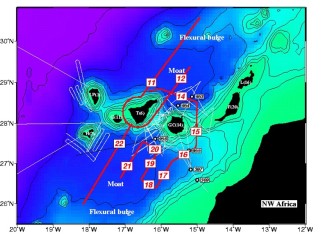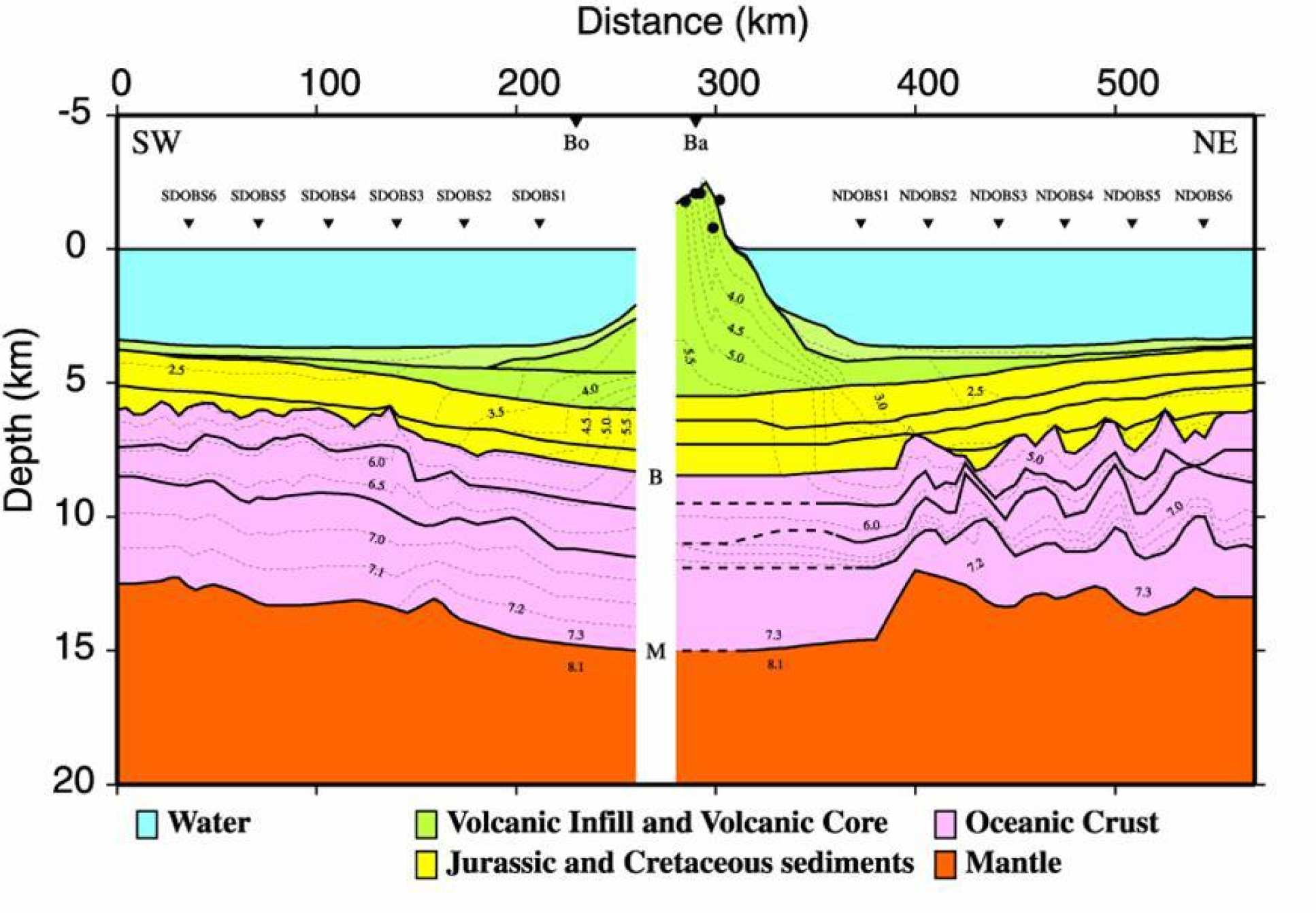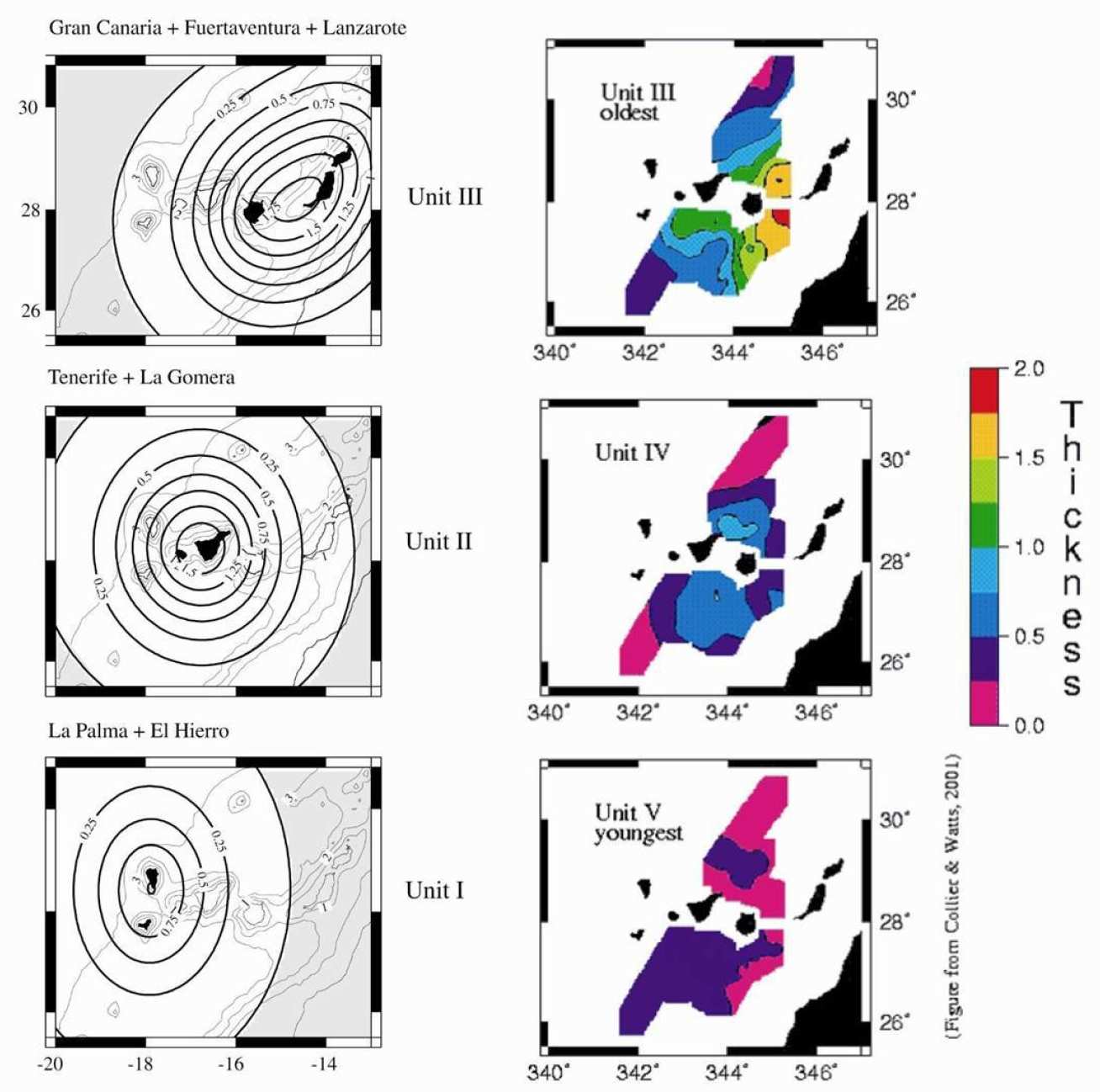Flexure of the Canary Islands

A controlled-source seismic reflection and wide-angle refraction (OBS and landstations) experiment was conducted around the central Canary Islands (Fig.1). The results showed the oceanic basement to be flexed downwards beneath the volcanic loads, forming a moat infilled by 2-3 km of sediments (Fig.2). This flexure, which has been verified by gravity modelling, can be explained by a model in which Tenerife and adjacent islands have loaded a lithosphere with a long-term (> 106 yr) elastic thickness of approximately 20 km. No significant volume of volcanically underplated material was detected beneath the crust of Tenerife.


It has been much debated whether the Canary Islands form a time-progressive chain, as would be expected for a classic hotspot origin. Dating of samples from the islands themselves show much age-overlap. We therefore conducted a detailed analysis of the seismic stratigraphy of the sediments deposited in the moat around the islands. By comparing the patterns observed with forward-modelled flexure predictions (Fig.3) we showed progressive loading of the crust from east to west (see diagram below). Hence this work gives support to a hotspot origin for the island chain.
Publications
- "A seismic study of lithospheric flexure in the vicinity of Tenerife, Canary Islands" (1997) A.B. Watts, C. Peirce, J S Collier, R. Dalwood, J.P. Canales, T.J. Henstock. Earth. Planet. Sci. Lett., Vol.146, No.3-4, pp.431-447 A seismic study of lithospheric flexure (pdf)
- "Lithospheric response to volcanic loading by the Canary Islands" (2001) J S Collier, A.B. Watts. Geophys. J. Int., 147, 660-676 Lithospheric response to volcanic loading (pdf)
People
- Rupert Dalwood (PhD student)
- Tony Watts (Oxford)
- Chris Peirce (Durham)